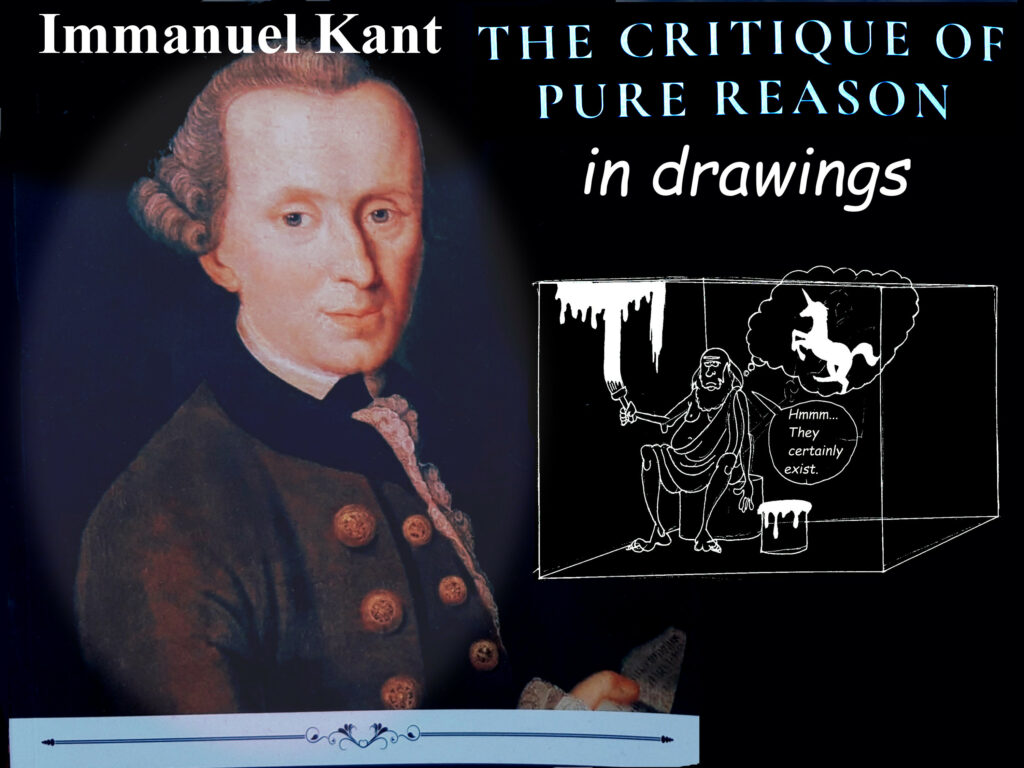
This work is not for everyone because it is too abstract. It’s a bit intimidating to read, and I feel insufficient my blog to express it in full length. Perhaps it’s not designed for average intelligence, but anyways, I can add nothing to its comlexity, perfection and excellence. Only thing I can do is simplifying to make it entertaining and more swallowable for my readers. And the best way to do that is to convey it with drawings and diagrams. This, of course, is no substitute for reading it. It is a special pleasure for me if this makes anyone want to read the work. So let’s get started.

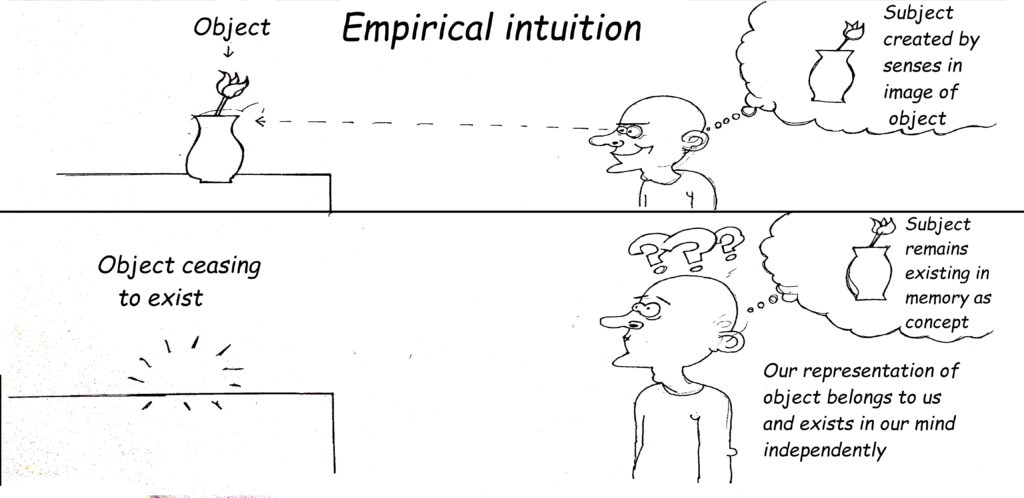
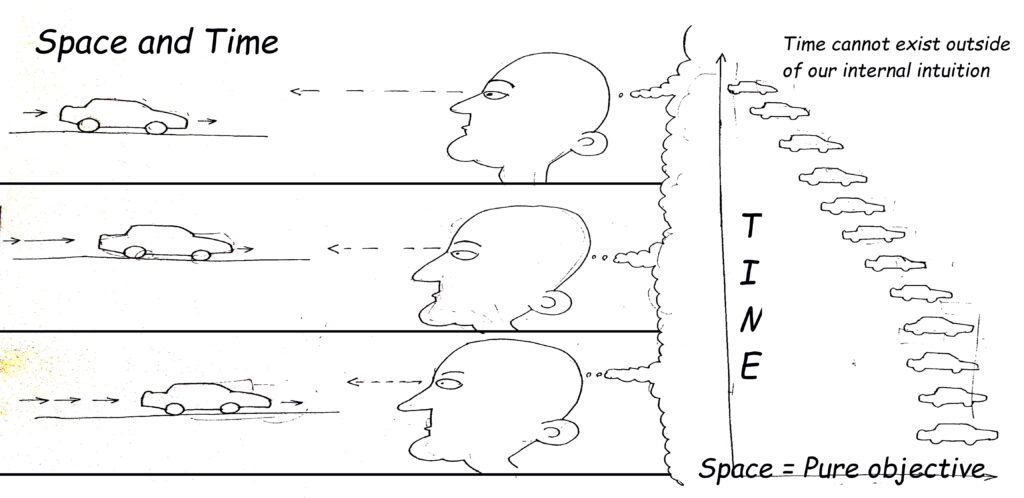
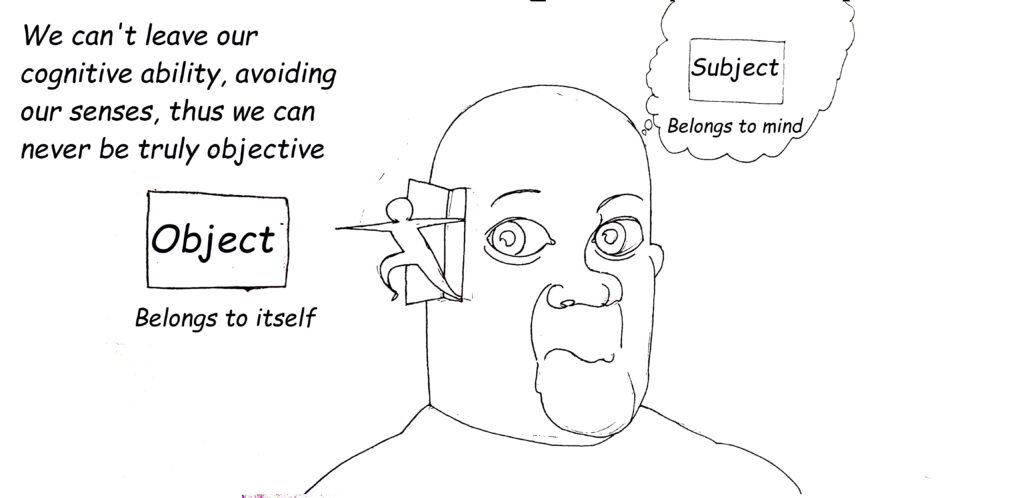

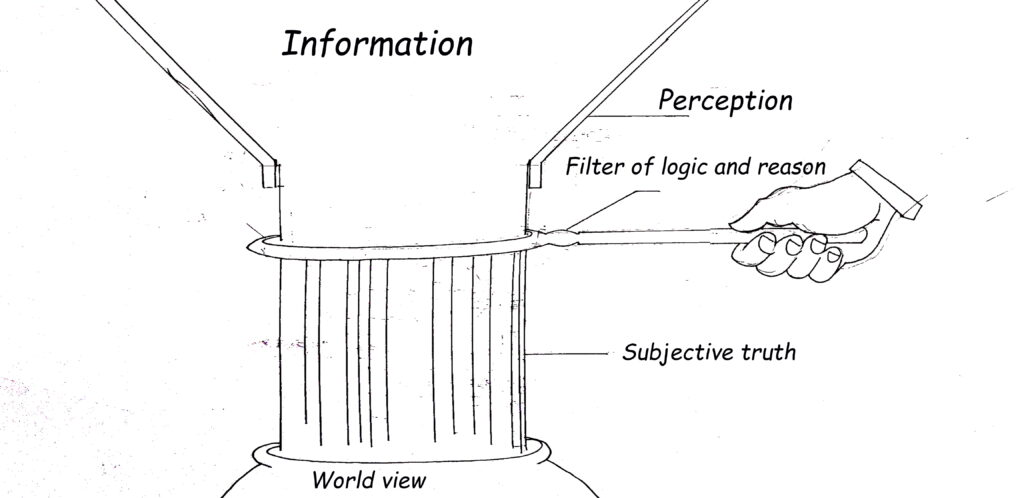
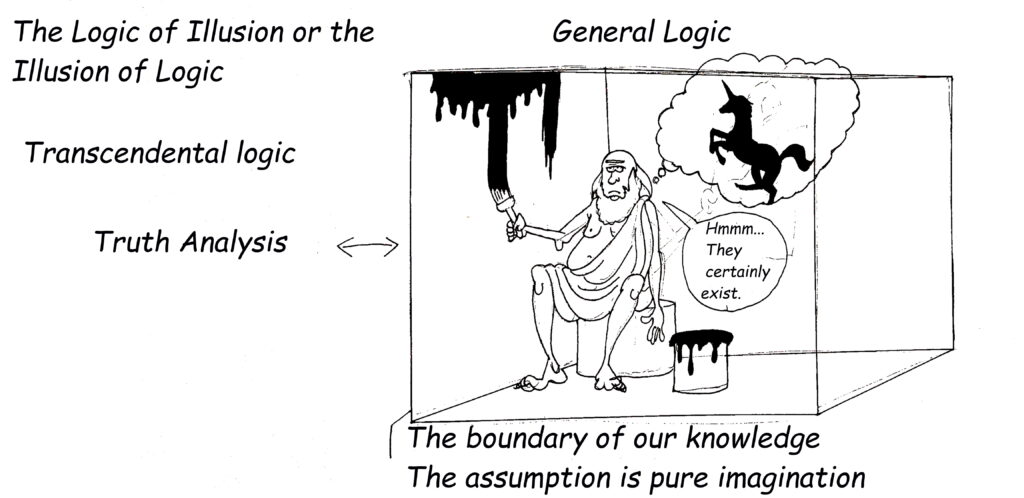


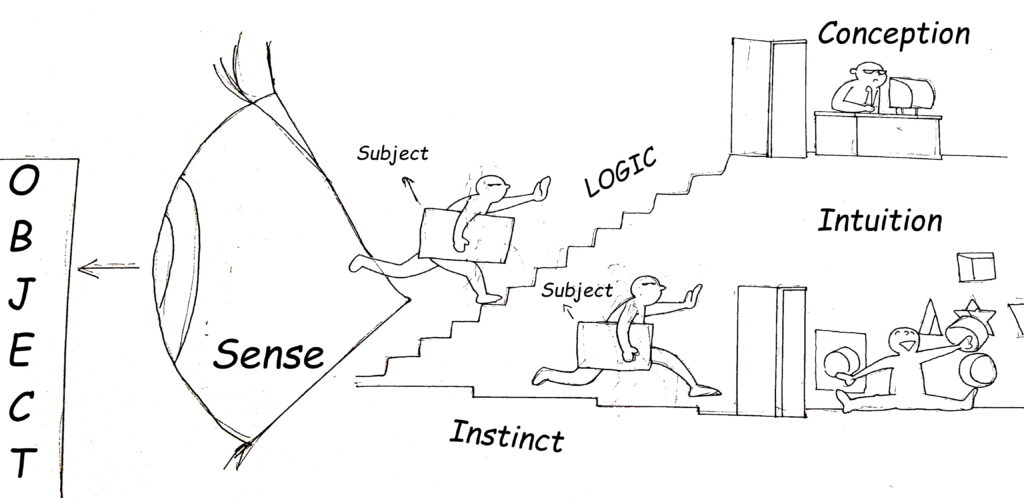
In whatsoever mode, or by whatsoever means, our knowledge my relate to objects, it is at least quite clear that the only manner in which it immediately relates to them is by means of an intuation. To this as the indispensable groundwork, all thought points. But an intuition can take place only in so far as the object is given to us. This, again, is only possible, to man at least, on condition that the object affect the mind in certain manner. The capacity for receiving representations (receptivity) through the mode in which we are affected to objects, objects, is called sensibility. By means of sensibility, therefore, objects are given to us, and it alone furnishes us with intuitions; by the understansing they are thought, and from it arise conceptions. But an thought must directly, or indirectly, by means of certain signs, relate ultimately to intuitions; consequently, with us, to sensibility, because in no other way can an object be given to us.
Immanuel Kant; The Critique of Pure Reason
Thanks for reading!
To be continued on part 2


Im very pleased to find this site. I need to to thank you for ones time for this particularly fantastic read!! I definitely really liked every part of it and I have you bookmarked to see new information on your site.
Thanks for your reply! Your words mean a lot to me!